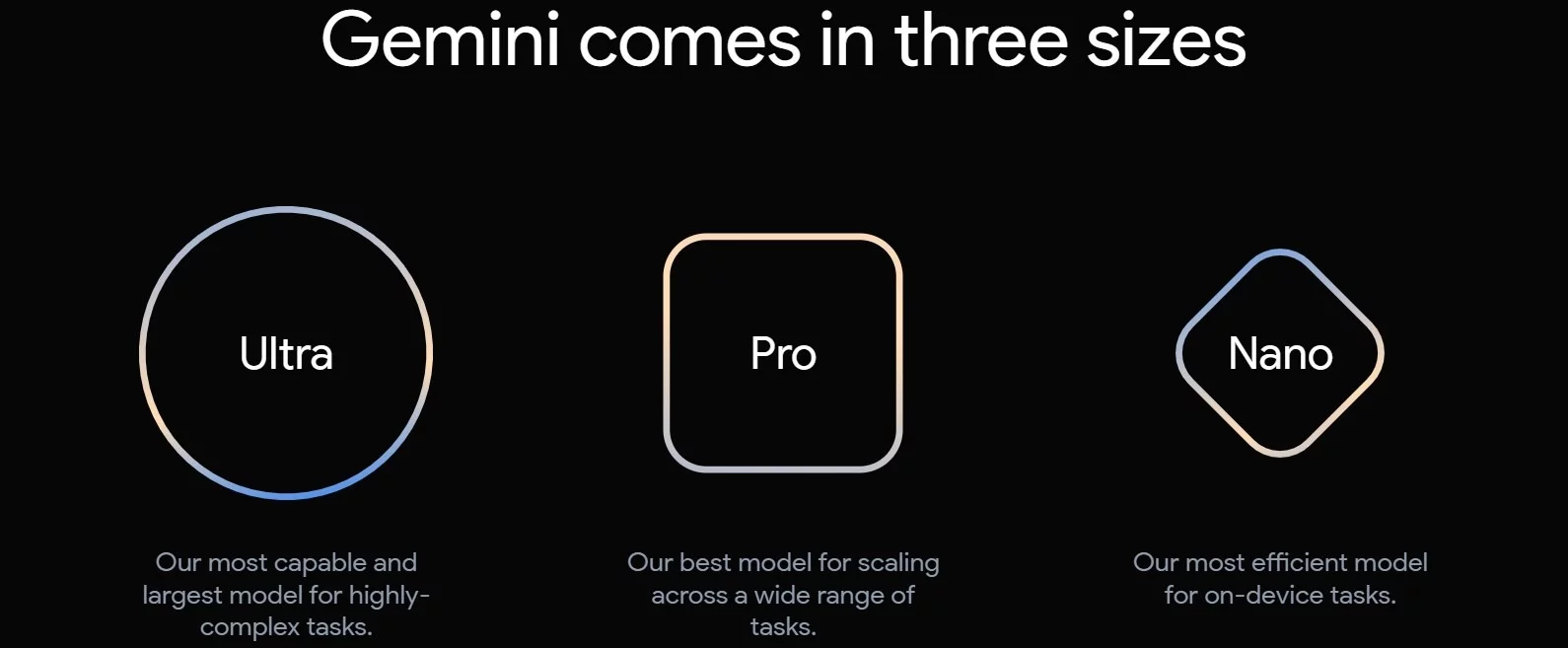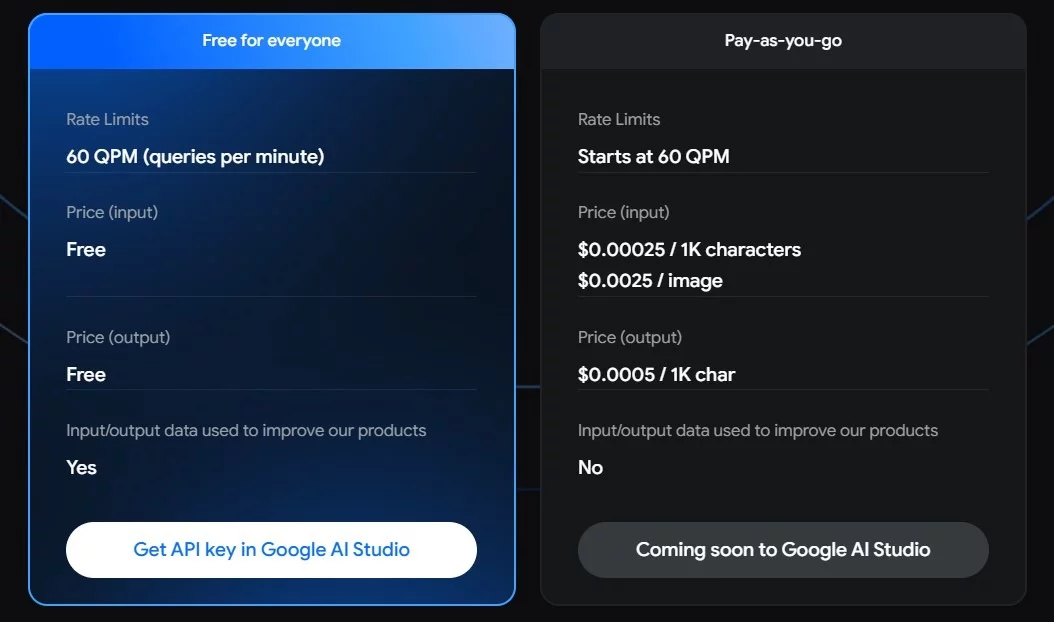Last Updated on January 22, 2024 3:39 pm by Laszlo Szabo / NowadAIs | Published on January 22, 2024 by Laszlo Szabo / NowadAIs
Your Guide for Decoding What is Google Gemini – Key Notes Section
- Multimodal AI Mastery: Google Gemini marks a significant leap in AI technology, embracing a multimodal approach to comprehend and process diverse data types.
- Family of AI Innovators: Gemini Ultra, Gemini Pro, and Gemini Nano cater to a spectrum of needs, from complex problem-solving to efficient mobile device integration.
- Breaking New Ground: Google Gemini is redefining AI capabilities, particularly with Gemini Ultra’s native image generation and Gemini Nano’s mobile device optimization.
- Benchmark Breakthroughs: Google claims Gemini Ultra outperforms existing models on numerous benchmarks, setting new standards in AI performance.
Introducing Google Gemini
Google Gemini has made a significant splash in the world of generative AI platforms.
This technology, developed by Google’s AI research labs DeepMind and Google Research, is poised to revolutionize the way we interact with AI models.
Now we’ll delve into the intricacies of Google Gemini, exploring its capabilities, use cases, and how it compares to its competitors.
What is Google Gemini?
Google Gemini is a family of generative AI models that takes a multimodal approach, allowing it to process and understand various types of data beyond just text.
Unlike previous language models, such as Google’s LaMDA, which focused solely on text-based tasks, Gemini has been trained on a diverse range of data, including audio, images, videos, codebases, and text in multiple languages.
This multimodal training sets Gemini apart, enabling it to tackle a wide array of tasks that require a deeper understanding of different modalities.
The Gemini family consists of three distinct models: Gemini Ultra, Gemini Pro, and Gemini Nano. Each model has its own unique features and applications, catering to different user needs and device capabilities.
The Difference Between Bard and Gemini
To better understand Gemini, it’s essential to differentiate it from Bard, another AI-powered application developed by Google.
While Bard serves as an interface for accessing certain Gemini models, Gemini itself is the underlying family of models that powers Bard and other GenAI applications.
Think of Bard as the app or client through which Gemini models can be utilized. This distinction is crucial in grasping the full scope of Google’s AI offerings and their individual functionalities.
It’s worth noting that Gemini is entirely independent of Imagen-2, another text-to-image model developed by Google. The relationship between these various AI models can be complex and confusing, but understanding their distinctions is vital in comprehending Google’s AI landscape.
Gemini Models and Their Capabilities

Now that we have a basic understanding of Google Gemini, let’s explore the individual models within the Gemini family and their respective capabilities.
Gemini Ultra – The Ultimate Gemini Model
Gemini Ultra is the flagship model within the Gemini family, serving as the foundation upon which the other models are built.
This model has been designed to tackle highly complex tasks, such as physics problem-solving, step-by-step worksheet analysis, and identifying relevant scientific papers.
Gemini Ultra’s capabilities extend beyond traditional text-based tasks, allowing it to generate formulas and update charts using more recent data.
One distinguishing feature of Gemini Ultra is its native image generation capability. Unlike other models that rely on an intermediary step to generate images, Gemini Ultra can output images directly without the need for additional processing.
However, this feature may not be available in the initial product release, as it requires further refinement.
Gemini Pro – Middle Way
Gemini Pro is a more lightweight version of the Gemini model, offering a broad range of applications and improved reasoning and understanding capabilities compared to its predecessor, LaMDA.
According to independent studies, Gemini Pro outperforms OpenAI’s GPT-3.5 in handling longer and more complex reasoning chains.
Gemini Pro is available in two forms: as a text-only model in Bard and as an API in Google’s Vertex AI platform.
In Bard, Gemini Pro enhances the reasoning, planning, and understanding capabilities, providing users with more comprehensive and accurate responses.
The API version in Vertex AI allows developers to customize Gemini Pro to specific contexts and use cases, enabling them to build chatbots, perform search summarization, and generate answers based on various documents and modalities.
Gemini Nano – the Starter Pack
Gemini Nano is a smaller, distilled version of the Gemini models, optimized for running directly on mobile devices like the Pixel 8 Pro.
This model offers efficiency and convenience by eliminating the need for server-side processing. Currently, Gemini Nano powers two features on the Pixel 8 Pro: Summarize in Recorder and Smart Reply in Gboard.
Summarize in Recorder leverages Gemini Nano to provide summarized transcripts of recorded conversations, interviews, and presentations directly on the user’s device.
This feature works even without an internet connection, ensuring privacy and accessibility.
Smart Reply in Gboard utilizes Gemini Nano to suggest appropriate responses during messaging conversations. While initially available only on WhatsApp, Google plans to expand this feature to other messaging apps in the future.
Gemini vs. Competitors: How Does It Stack Up?
As with many new AI technologies, the question arises: how does Gemini compare to its competitors?
While it’s difficult to provide a definitive answer until Gemini Ultra is released, Google claims that Gemini outperforms existing models on numerous benchmarks.
According to Google, Gemini Ultra surpasses state-of-the-art results on 30 out of 32 widely used academic benchmarks for large language models.
Gemini Pro also outperforms OpenAI’s GPT-3.5 in tasks like summarizing content, brainstorming, and writing.
However, it’s important to consider that benchmark scores only provide a partial picture of a model’s capabilities.
Early impressions of Gemini Pro have highlighted some shortcomings, such as factual errors, subpar reasoning, and inaccurate translations.
Google has acknowledged these issues and pledged to make improvements, but the timeline for these enhancements remains uncertain.
Pricing and Availability

Gemini Pro is currently available for free in Bard, AI Studio, and Vertex AI’s preview.
However, once Gemini Pro exits the preview stage in Vertex AI, it will be subject to pricing.
Users will be charged $0.0025 per character for input and $0.00005 per character for output. This pricing structure applies to text-based inputs, while Gemini Pro Vision, which processes text and imagery, incurs an additional cost of $0.0025 per image.
Gemini Nano, on the other hand, is already integrated into the Pixel 8 Pro and accessible through apps like Recorder and Gboard. Developers interested in incorporating Gemini Nano into their Android apps can sign up for a sneak peek to explore its potential.
Conclusion
With Gemini Ultra, Gemini Pro, and Gemini Nano, Google offers a versatile suite of models catering to different user needs and device capabilities.
While Gemini shows promise, it also faces challenges in terms of accuracy and performance.
As the Artificial Intelligence technologies continues to evolve, it will be fascinating to see how Google refines and improves the Gemini family to meet the demands of an ever-changing AI landscape.
FAQ Section:
- What is Google Gemini?
Google Gemini is a family of generative AI models developed by Google, capable of understanding and processing a wide range of data types beyond text, including audio, images, and code. - How does Google Gemini differ from other AI models?
Google Gemini stands out with its multimodal approach and its ability to understand and process data in 18 different programming languages, pushing the boundaries of AI’s capabilities. - What are the distinct models within the Google Gemini family?
The Gemini family consists of three models: Gemini Ultra, Gemini Pro, and Gemini Nano, each tailored to specific tasks and device capabilities. - What makes Gemini Ultra unique?
Gemini Ultra excels in complex tasks, boasting native image generation capability and the power to tackle advanced problem-solving and scientific research tasks. - How does Gemini Nano enhance mobile device functionality?
Gemini Nano optimizes AI processing directly on mobile devices, powering features like Summarize in Recorder and Smart Reply in Gboard, even without an internet connection.










